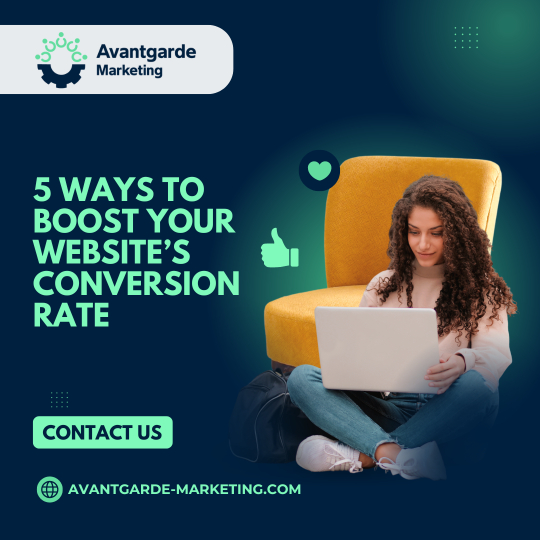
Every business with an online presence knows that driving traffic to a website is only half the battle. The real challenge lies in converting that traffic into leads, sales, or subscriptions. A high conversion rate is the key to turning visitors into customers, maximizing the value of your online marketing efforts. Whether you’re selling products, generating leads, or encouraging sign-ups, these five strategies will help you boost your website’s conversion rate.
1. Optimize Your Website for Speed
Website speed is a crucial factor in both user experience and search engine ranking. If your site takes too long to load, visitors are likely to abandon it before even engaging with your content.
How to Improve Speed:
Use compressed images to reduce file size.
Enable browser caching and use a Content Delivery Network (CDN).
Minimize HTTP requests by reducing the number of files required for each page.
Opt for fast, reliable hosting.
Faster websites lead to better user experience, lower bounce rates, and ultimately, higher conversions.
2. Streamline Your Website’s Navigation
If users can’t easily find what they’re looking for, they’re likely to leave. Clear, intuitive navigation helps guide users through your site and leads them to conversion points like product pages, contact forms, or sign-up buttons.
Ways to Improve Navigation:
Simplify your menu structure, limiting it to essential categories.
Use breadcrumb navigation so visitors can easily backtrack.
Make your Call-to-Action (CTA) buttons prominent and easy to find.
Incorporate a search bar for easier access to your content.
A clutter-free, logical navigation can keep visitors engaged and moving toward your goal.
3. Create Strong, Compelling CTAs
Your Call-to-Action buttons are critical to conversion. Whether you want visitors to buy, subscribe, or contact you, your CTA needs to stand out and offer clear value.
Tips for Effective CTAs:
Use action-oriented language like “Get Started,” “Buy Now,” or “Claim Your Free Trial.”
Make your CTA buttons visually distinct with contrasting colors.
Place CTAs above the fold and throughout the page.
Keep the CTA message simple and direct.
A well-placed, persuasive CTA can be the deciding factor in converting a visitor into a customer.
4. Leverage Social Proof and Testimonials
Social proof—such as customer reviews, case studies, and testimonials—builds trust with new visitors. People are more likely to take action when they see that others have had positive experiences with your brand.
Ways to Integrate Social Proof:
Showcase customer reviews on product pages.
Add client logos or trust badges (e.g., secure payment, money-back guarantee).
Display case studies or success stories prominently on your homepage.
Use real-time notifications showing recent purchases or sign-ups to create urgency.
Social proof fosters credibility and reassures potential customers, increasing their likelihood of conversion.
5. Optimize for Mobile Users
With the rise of mobile internet usage, a significant portion of your website’s traffic is likely coming from mobile devices. Ensuring your website is mobile-friendly is essential for capturing and converting these visitors.
How to Optimize for Mobile:
Use responsive design that adapts to different screen sizes.
Simplify forms to make them easier to complete on a mobile device.
Make sure buttons and links are large enough to tap on a small screen.
Ensure fast load times on mobile by minimizing heavy elements.
A mobile-optimized site will ensure a smooth experience for all users, no matter what device they’re on, which can significantly boost your conversions.
Conclusion
Improving your website’s conversion rate doesn’t have to be complicated. By focusing on optimizing website speed, refining navigation, crafting compelling CTAs, leveraging social proof, and ensuring mobile optimization, you can enhance user experience and drive more conversions. Each of these strategies can be implemented incrementally, so start with small improvements and track the results. Over time, you’ll see a positive impact on your bottom line.
Boosting conversion rates is a continuous process, and the key is to keep testing and refining based on user behavior and feedback. The more you optimize, the better your chances of converting website visitors into loyal customers.

